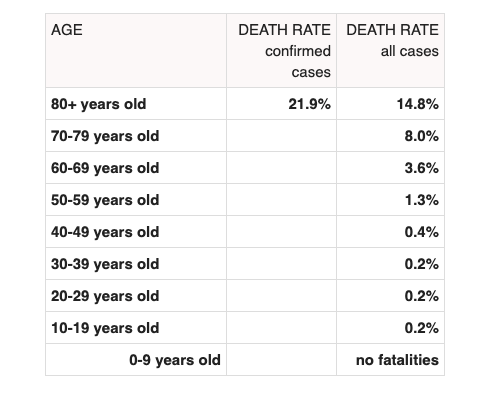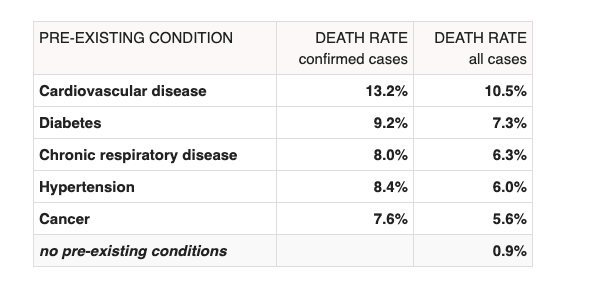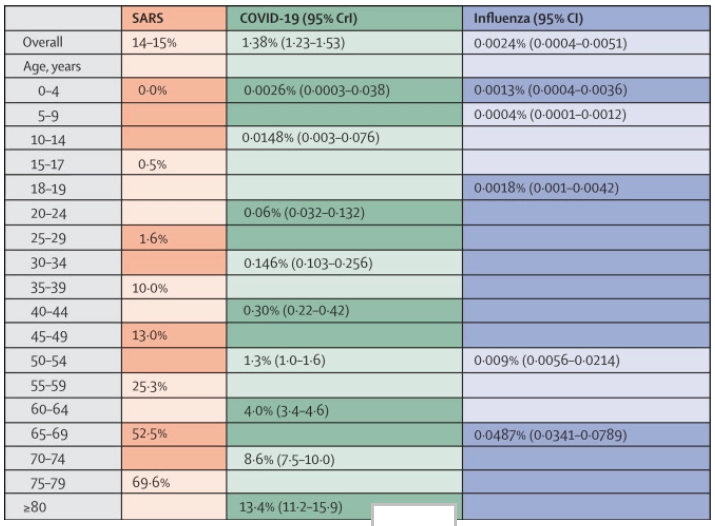The Imperial College London
A paper written by a team of 33 researchers at Imperial College London, a research-oriented science institution in South Kensington, was summarized recently by Tucker. This is from it.
Dr. Fauci’s latest admission: “I’ve looked at all the models. I’ve spent a lot of time on the models. They don’t tell you anything. You can’t really rely upon models.”
The economic suffering we are enduring right now was based on these models, amplified in their extremes by a click-hungry media apparatus that thrives in a crisis as in no other time.
There was precious little consultation with serious medical professionals (the pleas of 800 were ignored). Also ignored were a range of experienced epidemiologists with real track records as well as economists. There were no legislative votes, and no real public debate. The Constitution was ripped to shreds. Large numbers of people who, by virtue of the musical-chairs game of elections, happen to be holding office assumed dictatorial power and declare themselves wise enough to rend the social fabric between essential and non-essential and thus instantly wreck the dreams and lives of tens of millions of people.
Despite all the expertise out there, and tremendous efforts to beg caution, and despite all our pretensions at being a scientifically minded people, at all levels of society, there was genuine panic and the adoption of what seems like the medieval “miasma” theory of disease. It’s just in the air, everywhere, blowing around. Stay indoors! Get away. Cling to loved ones and hope for the best! Better yet, sit by yourself, alone in a room, until this ends!
That was six weeks ago. You still can’t get a test, unless you are very sick and hurl yourself at the hospital front door. That is the fault of government agencies, in a scandal that has been widely covered and will be told throughout the ages. That will surely be remedied in time, along with a much-needed antibody test for post-infection immunity.
All that said, we are finally getting at least some information to make sense of this disease. In particular: demographics. We are at least finding out for whom it is fatal and therefore can better focus mediation strategies on those in danger – which is essentially the core job of medical professionals since, well, since the ancient world. To the extent we can replace fear-based mythology, predictions, and state power with knowledge rooted in empirical realities, that is to say, actual facts, we get closer to comprehending the possibility of calm and focus on what matters.
What have we learned? I draw your attention to a complicated paper written by a team of 33 researchers at the now-famous Imperial College London. This difference between this paper and the others is that this one is rooted not in what statistical models predict based on malleable assumption but on the actual factual record. The paper: “Estimates of the severity of coronavirus disease 2019: a model-based analysis.”
For its conclusions, I’m relying on a summary in Statnews: What explains Covid-19’s lethality for the elderly?
Researchers on Monday announced the most comprehensive estimates to date of elderly people’s elevated risk of serious illness and death from the new coronavirus: Covid-19 kills an estimated 13.4% of [infected] patients 80 and older, compared to 1.25% of those in their 50s and 0.3% of those in their 40s. The sharpest divide came at age 70. Although 4% of patients in their 60s died, more than twice that, or 8.6%, of those in their 70s did…
An accompanying editorial finally says what people are starting to realize: “the fatality rate is low for younger people.” It’s high for older, unhealthy people, but low for healthy younger people. That’s hugely important information for focusing the response.
Worldometers presents the reality more clearly (but keep in mind that the precise case fatality ratio is unknown given the lack of random testing and potential misclassification; what matters here are the demographic disparities).

And from confirmed COVID patients with preexisting conditions:


How do these surprising demographics affect the fatality ratio, the number on which everyone obsesses because it is this that gives us an indication of whether this is “worse” or “not as bad as” the seasonal flu? It suggests that an aggregate number masks a huge disparity between groups.
In the outbreak’s early weeks that was thought to be as high as 3% to 8%. Instead, the fatality rate among people with confirmed disease is 1.38%, they concluded. That supports an estimate by researchers at the Harvard T.H. Chan School of Public Health earlier this month of a 1.4% fatality rate in confirmed cases. The British group said the fatality rate among all of those infected with the new coronavirus — including those who don’t have symptoms — is 0.66%.
That’s a huge difference from what people believed at the very outset, confirming that the cautions of John Ioannidis were right to introduce doubt about sweeping impositions of social, economic, and political change based on early perceptions, which have always been far more scary than the reality. It was 15 years ago that headlines blared the coming mass death from Bird Flu, with predictive epidemiologists demanding that schools and businesses close to protect us from the worst fate. That didn’t happen, although Bird Flu was deadly (all such viruses are), but the pandemic was not anywhere close to as bad as was predicted.
In sum, what researchers know now that they only suspected a few months ago is that coronavirus is mainly a threat to older people with health issues, and men in particular. That’s hugely important information and a far cry from the confused miasma theory (everyone is going to die!) that drove the panicked response.
To be sure, this does NOT mean younger people are in the clear – it’s a severe disease, and there are always exceptional cases that defy the demographic patterns, as with any disease. But the statistical evidence shows this is rare, whereas more severe complications for the sick and elderly are far more common.
No comments:
Post a Comment